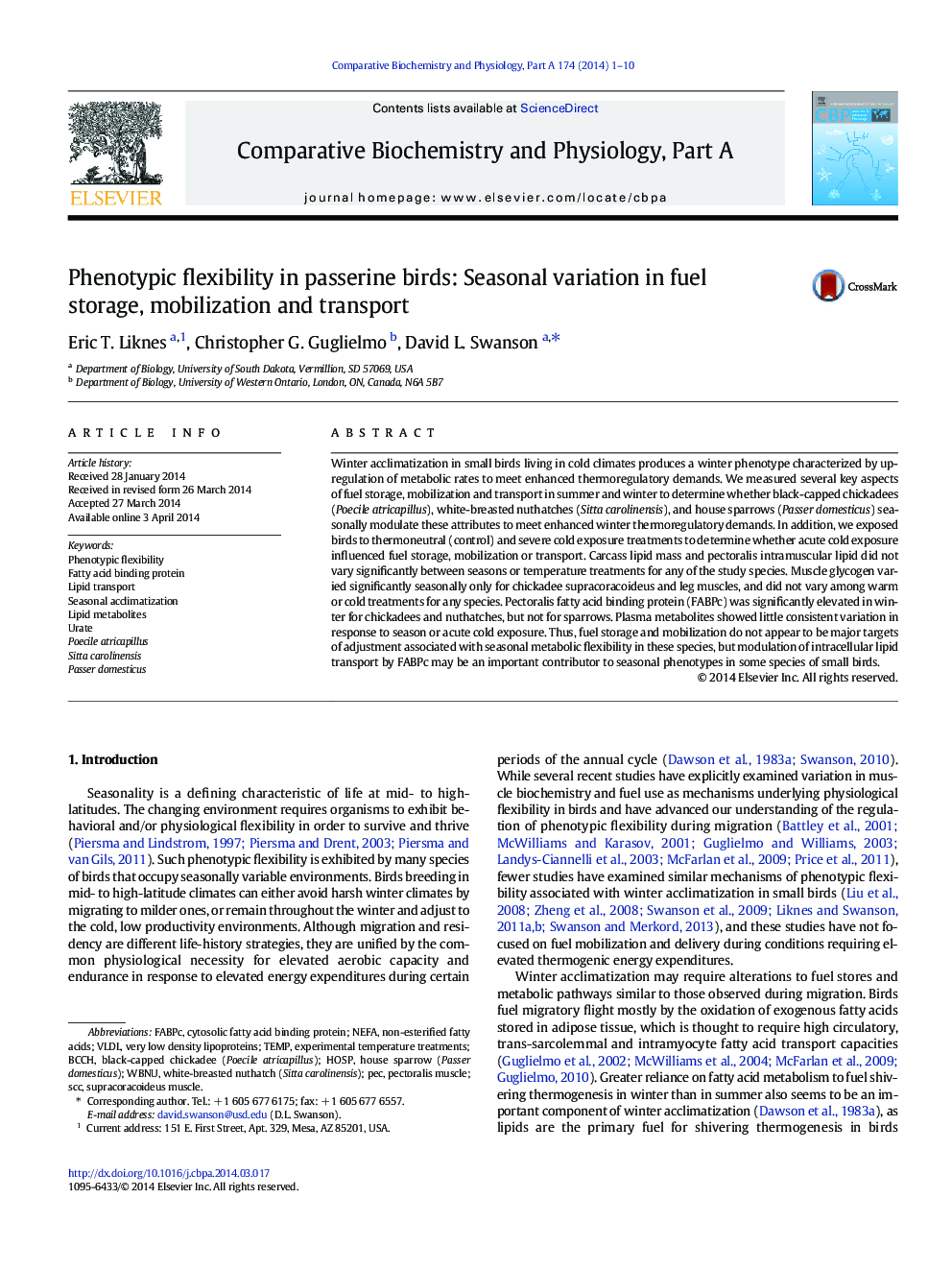| Article ID | Journal | Published Year | Pages | File Type |
|---|---|---|---|---|
| 1972202 | Comparative Biochemistry and Physiology Part A: Molecular & Integrative Physiology | 2014 | 10 Pages |
Winter acclimatization in small birds living in cold climates produces a winter phenotype characterized by upregulation of metabolic rates to meet enhanced thermoregulatory demands. We measured several key aspects of fuel storage, mobilization and transport in summer and winter to determine whether black-capped chickadees (Poecile atricapillus), white-breasted nuthatches (Sitta carolinensis), and house sparrows (Passer domesticus) seasonally modulate these attributes to meet enhanced winter thermoregulatory demands. In addition, we exposed birds to thermoneutral (control) and severe cold exposure treatments to determine whether acute cold exposure influenced fuel storage, mobilization or transport. Carcass lipid mass and pectoralis intramuscular lipid did not vary significantly between seasons or temperature treatments for any of the study species. Muscle glycogen varied significantly seasonally only for chickadee supracoracoideus and leg muscles, and did not vary among warm or cold treatments for any species. Pectoralis fatty acid binding protein (FABPc) was significantly elevated in winter for chickadees and nuthatches, but not for sparrows. Plasma metabolites showed little consistent variation in response to season or acute cold exposure. Thus, fuel storage and mobilization do not appear to be major targets of adjustment associated with seasonal metabolic flexibility in these species, but modulation of intracellular lipid transport by FABPc may be an important contributor to seasonal phenotypes in some species of small birds.
